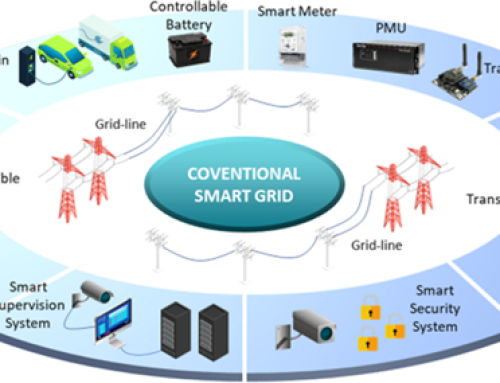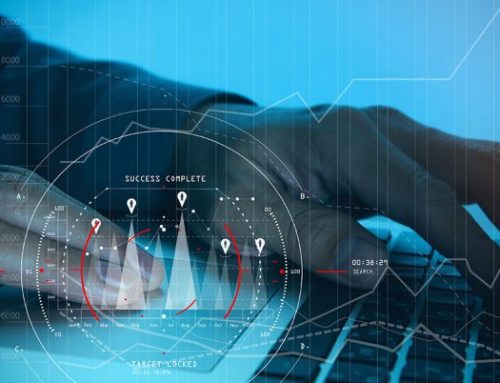Is managing your growing Distributed Energy Resources (DERs) network turning chaotic?
You’re not alone. Many electric utilities across the U.S. struggle with real-time coordination of grid-connected assets like solar panels, wind turbines, energy storage systems, and microgrids. These systems generate power at unpredictable intervals. You likely find it difficult to align asset performance, maintenance, regulatory compliance, and customer needs—all while the pressure to deliver seamless energy increases.
You might be dealing with scattered data, disconnected asset planning, and slow response times. These inefficiencies are not just operational headaches. They directly affect your bottom line. The solution? ERP for Distributed Energy Resources—an integrated platform that helps unify asset data, automate workflows, and connect departments in real-time.
Let’s break it down.
ERP for Distributed Energy Resources: Why Now More Than Ever?
The energy sector is shifting rapidly from centralized grids to decentralized models. DERs bring flexibility and sustainability, but they also bring new data management and operations challenges. This shift demands a system that can align your DER portfolio with financials, inventory, project planning, asset lifecycles, and compliance—without silos.
ERP for Distributed Energy Resources integrates data across departments, giving you a 360-degree view of asset operations. It ties your work orders, load balancing, maintenance schedules, field service, and regulatory reporting into one platform.
Without ERP, you are probably relying on disconnected spreadsheets or legacy tools. That may work for a small operation. But when you’re handling multiple energy sites, subcontractors, regulatory bodies, and customer service—scattered tools only slow you down.
By contrast, a cloud-based ERP platform like Microsoft Dynamics 365 connects your SCADA/EMS/ADMS systems with business operations and customer management. The result is simple: improved uptime, lower operational costs, and accurate forecasting.
The demand for enterprise systems like ERP is rising fast. In fact, the ERP market was valued at $63.33 billion in 2022 and is expected to reach $187.79 billion by 2030, growing at a CAGR of 14.8%. This reflects a rapid shift as industries move toward digital systems for better control and decision-making
Centralized Asset Visibility and Real-Time Monitoring
DERs are highly dynamic. Energy generation depends on variable inputs—sunlight, wind speed, battery charge levels. That makes it difficult to monitor in real time using manual systems.
ERP for Distributed Energy Resources centralizes asset performance data. You gain visibility into uptime, output, anomalies, and usage trends—across all locations. This eliminates guesswork. Operators can schedule predictive maintenance, track component health, and forecast energy loads more accurately.
This is especially powerful when connected with Dynamics 365 IoT for Energy Sector. IoT sensors send live telemetry to your ERP system. You can automate work orders, reduce unplanned outages, and reduce manual data entry.
Predictive Maintenance with ERP for Energy Equipment Maintenance
Manual maintenance leads to either over-servicing or breakdowns. Neither is ideal. Predictive maintenance using AI and sensor analytics changes that.
Using ERP for Energy Equipment Maintenance, utilities can schedule service only when needed. Equipment sensors send alerts to the ERP system when performance drops. That means your teams only fix what needs fixing—at the right time.
This strategy lowers operational expenditure, extends equipment life, and reduces emergency repair costs. The ERP system also stores historical maintenance logs, warranty data, and compliance certificates—all in one place.
It also helps with budget planning. You can forecast future repairs and align procurement accordingly.
DER Operations and Business Planning: A Comparison View
Here’s how ERP transforms distributed energy resource management compared to traditional tools:
| Parameter | Legacy System | ERP for Distributed Energy Resources |
| Data Source | Disconnected files | Unified, real-time platform |
| Asset Management | Manual tracking | Automated, sensor-based |
| Reporting | Monthly delays | Instant analytics |
| Compliance | High risk of errors | Rule-based checks and alerts |
| Resource Planning | Guess-based | AI-driven forecasts |
| Field Operations | Paper logs | Mobile-first digital tools |
| Energy Forecasting | Reactive | Predictive models using AI |
| Customer Data | Fragmented | Integrated CRM + service data |
| Downtime Response | Reactive repairs | Predictive alerts and automation |
As you can see, ERP shifts your operations from reactive to proactive. You gain the ability to act ahead of disruptions.
ERP Simplifies Regulatory Compliance and Reporting
Compliance in the energy sector is non-negotiable. Reporting requirements from NERC, FERC, and state-level bodies are growing more detailed. Traditional methods of compiling reports are not just slow—they are error-prone.
ERP systems automate this. They apply regulatory logic to your data. That means your reports are automatically validated for compliance. Audit trails are generated in real time. Your legal risk is reduced.
ERP for Distributed Energy Resources also integrates seamlessly with GIS and SCADA tools to enrich reports with spatial data and real-time metrics. This improves accuracy for regulators and internal teams.
Integrating ERP with EMS/ADMS and SCADA Systems
One of the strongest advantages of using ERP platforms like Microsoft Dynamics 365 is system integration. You don’t need to replace your existing energy management systems.
Instead, the ERP integrates with EMS, ADMS, SCADA, and GIS platforms. This allows consistent data flow from field devices to finance, procurement, HR, and service teams.
This integration helps with faster load balancing, workforce scheduling, energy trading data, and emergency response—all from one dashboard.
Final Thoughts
Managing Distributed Energy Resources without an integrated solution leads to missed opportunities and higher costs. A modern ERP platform helps you control every aspect—planning, operations, maintenance, finance, and compliance.
ERP for Distributed Energy Resources is no longer optional. It’s the backbone of efficient grid management.
E-365.ai specializes in the electric utility space. We bring Microsoft Dynamics 365 expertise, deep industry knowledge, and smart ERP customizations that fit your DER strategy.
Talk to E-365.ai today to upgrade your operations with ERP for Distributed Energy Resources.
Visit e-365.ai.






Leave A Comment